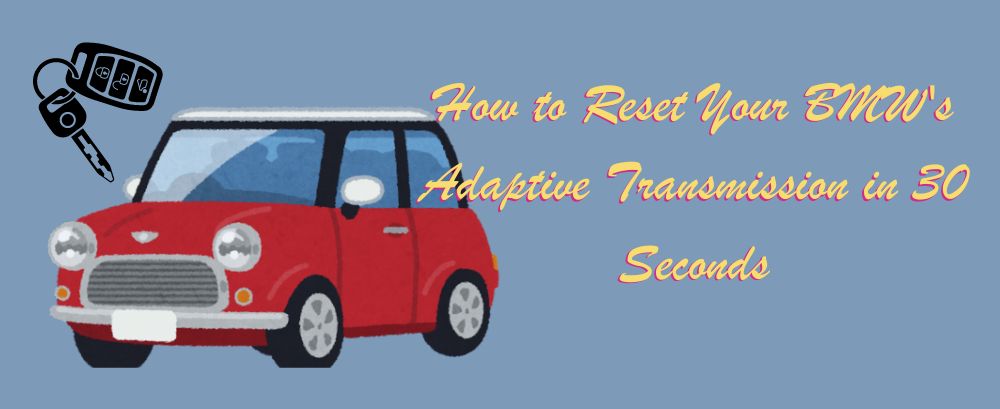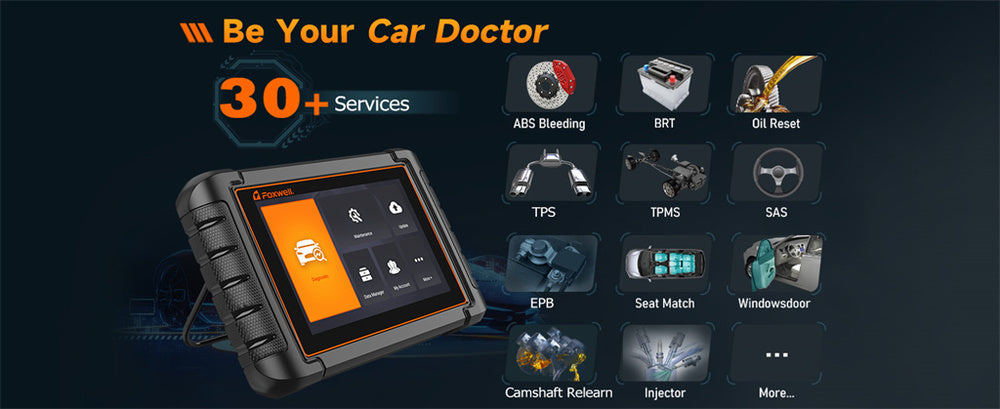If you’ve ever felt your BMW’s transmission start to hesitate, shift roughly, or respond sluggishly, you know how frustrating it can be. You might assume something’s seriously wrong, but in many cases, a simple fix can make a world of difference.
Resetting your adaptive transmission can take just 30 seconds, and it could smooth out your shifts and restore that responsive feel you love.
In this article, we’ll walk you through how to reset your transmission, when it’s necessary, and how using an OBD2 scanner like the Foxwell NT809BT can help diagnose deeper transmission issues or other underlying problems.
Why Resetting Your BMW’s Adaptive Transmission is Important
First off, let’s understand why your BMW’s transmission might need a reset. BMW vehicles, especially newer models like the 2014 BMW 750 X, come with adaptive transmissions.
These transmissions are designed to “learn” your driving habits over time and adjust shift patterns to optimize performance and fuel efficiency.
However, over time, the transmission might adapt to bad driving habits or inefficient patterns, resulting in rough shifts or hesitation when you accelerate.
By resetting the adaptive transmission, you’re giving your car a chance to forget its previous "learning" and start fresh, allowing the system to better adjust to your current driving style.
It’s like rebooting a computer to clear out any unwanted clutter and start with a clean slate.
Step-by-Step Guide to Reset Your BMW's Transmission
Here’s how you can reset your BMW's transmission in just 30 seconds:
Insert the key into the key fob slot (if applicable) but don’t press the brake pedal.
Press the engine start button ONCE so the car's electronics start up. You’ll notice the engine light and other dashboard indicators come on, but the engine itself stays off.
Press and hold the gas pedal all the way down until you feel a slight click. Keep it pressed in this position.
Hold this position for 25 to 30 seconds. After this time, release the gas pedal and turn off the car’s electronics.
Restart the car and take it for a test drive. You should notice a much smoother, more responsive transmission.
Common Signs Your Transmission Needs a Reset
You might be wondering how to know when your transmission needs a reset. Here are some common signs:
- Rough shifting: Your car changes gears in a jerky, unsteady manner.
- Hesitation on acceleration: There’s a slight delay between when you press the gas and when the car responds.
- Stuttering or lurching: Your vehicle feels like it’s struggling to shift, especially when you accelerate quickly.
- Inconsistent power delivery: Your car’s performance feels unpredictable, especially when trying to speed up.
If you experience any of these issues, a quick transmission reset could make a big difference.
How an OBD2 Scanner Can Help with Transmission Diagnostics
While resetting your transmission can solve a lot of shifting issues, sometimes the problem runs deeper, and that’s when an OBD2 scanner becomes an essential tool.
For transmission diagnostics, a scanner like the Foxwell NT809BT can be a game-changer. This device goes beyond simply reading error codes—it provides a comprehensive view of your car’s performance, including real-time data on transmission behavior.
The Foxwell NT809BT offers wireless connectivity, meaning you can conveniently run diagnostics without the hassle of staying tethered to your vehicle with a cable.
Its full-system diagnostic capabilities allow you to scan not only the engine and transmission but also ABS, SRS, and other crucial systems.
So, if resetting your BMW's adaptive transmission didn’t resolve the issue, the NT809BT can help you pinpoint whether it's a transmission control module (TCM) issue, a sensor fault, or something else entirely.
With real-time data and graphing capabilities, you can monitor the exact transmission performance, such as shift points, clutch pressures, and torque converter status, helping you identify if further mechanical work is needed.
Additionally, the NT809BT supports wireless updates, ensuring that you always have the latest software and vehicle compatibility.

Other Benefits of Using an OBD2 Scanner for Vehicle Maintenance
Aside from transmission diagnostics, the Foxwell NT809BT is invaluable for overall vehicle maintenance. Whether it’s engine misfires, sensor failures, or even battery health, an OBD2 scanner gives you detailed insights into your car’s health.
This is particularly useful for high-mileage vehicles like the BMW 750 X, which, as it ages, will benefit from regular diagnostics.
Some of the key benefits include:
- Accurate diagnostics: Avoid guesswork and get real-time data to quickly identify the problem.
- Resetting warning lights: After fixing an issue, the scanner allows you to reset warning lights like "check engine."
- Preventative maintenance: Catch potential issues early before they turn into expensive repairs.
For DIY enthusiasts or professional mechanics, a tool like the NT809BT saves both time and money in the long run.
Conclusion
Maintaining a high-performance car like a BMW doesn’t always mean big, expensive repairs.
Sometimes, the smallest tweaks—like resetting your adaptive transmission—can completely transform how your car drives.
And if you’re looking for deeper diagnostics, pairing that reset with an OBD2 scanner like the Foxwell NT809BT can give you even greater control over your vehicle’s health.
Whether it’s performing a quick transmission reset or using the NT809BT to get a detailed look under the hood, these tools are invaluable for keeping your car running smoothly for years to come.
So if your BMW isn’t driving quite like it used to, don’t ignore it. These quick fixes might just be the solution you’ve been looking for.
FAQs
Will disconnecting battery reset transmission?
Disconnecting the battery may reset some systems, but it doesn’t always effectively reset the transmission. For a proper reset, follow the specific adaptive transmission reset procedure.
How long does it take for a transmission to relearn?
It typically takes about 50 to 100 miles of driving for the transmission to fully relearn and adapt to your driving style after a reset.
How do I manually reset my car computer?
To manually reset your car’s computer, you can disconnect the battery for 10-15 minutes. However, for more specific resets, such as the transmission, follow your vehicle’s unique reset procedure, like holding the gas pedal down for 30 seconds as described in the article.




Leave a comment
This site is protected by hCaptcha and the hCaptcha Privacy Policy and Terms of Service apply.